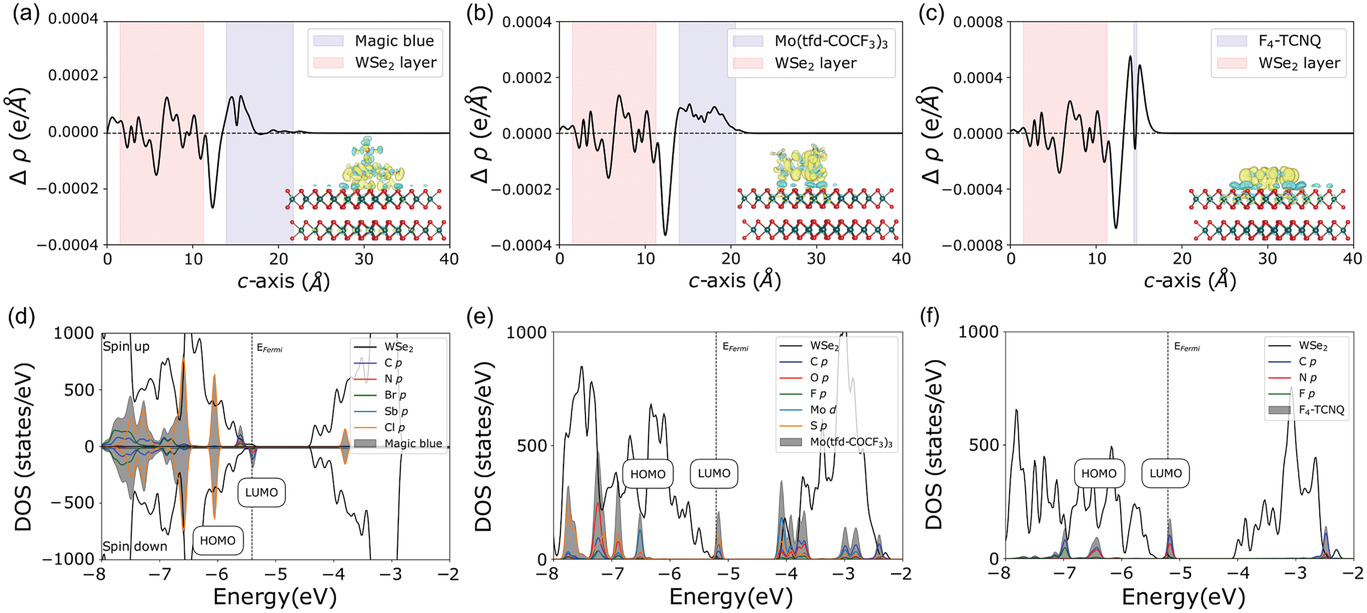Molecular Dopant-Dependent Charge Transport in Surface-Charge-Transfer-Doped Tungsten Diselenide Field Effect Transistors
-
Authors :
Jae-Keun Kim,Kyungjune Cho,Juntae Jang,Kyeong-Yoon Baek,Jehyun Kim,Junseok Seo,Minwoo Song,Jiwon Shin,Jaeyoung Kim,Stuart S. P. Parkin,Jung-Hoon Lee,Keehoon Kang,Takhee Lee
-
Journal :
Advanced Materials
-
Vol :
33
-
Page :
2101598
-
Year :
2021

Abstract
The controllability of carrier density and major carrier type of transition metal dichalcogenides(TMDCs) is critical for electronic and optoelectronic device applications. To utilize doping in TMDC devices, it is important to understand the role of dopants in charge transport properties of TMDCs. Here, the effects of molecular doping on the charge transport properties of tungsten diselenide (WSe2) are investigated using three p-type molecular dopants, 2,3,5,6-tetrafluoro-7,7,8,8-tetracyanoquinodimethane (F4-TCNQ), tris(4-bromophenyl)ammoniumyl hexachloroantimonate (magic blue), and molybdenum tris(1,2-bis(trifluoromethyl)ethane-1,2-dithiolene) (Mo(tfd-COCF3)3). The temperature-dependent transport measurements show that the dopant counterions on WSe2 surface can induce Coulomb scattering in WSe2 channel and the degree of scattering is significantly dependent on the dopant. Furthermore, the quantitative analysis revealed that the amount of charge transfer between WSe2 and dopants is related to not only doping density, but also the contribution of each dopant ion toward Coulomb scattering. The first-principles density functional theory calculations show that the amount of charge transfer is mainly determined by intrinsic properties of the dopant molecules such as relative frontier orbital positions and their spin configurations. The authors’ systematic investigation of the charge transport of doped TMDCs will be directly relevant for pursuing molecular routes for efficient and controllable doping in TMDC nanoelectronic devices.
















